Lenovo IdeaPad Y560p review
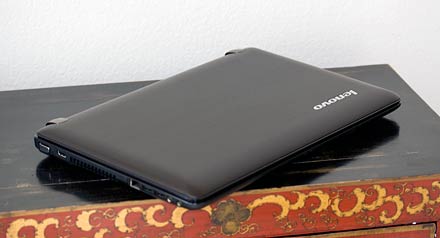
Lenovo’s IdeaPad Y series laptops target gamers and multimedia types on a budget. You get a fast Intel CPU, dedicated AMD Radeon graphics with 1 gig of VRAM, HDMI and excellent speakers. The Y just got faster thanks to a second generation Intel Core i7 CPU, and battery life is better as well. The Lenovo IdeaPad Y560p is one of the first Sandy Bridge (second gen Intel Core i CPU and chipset) notebooks to hit the market. Available now, the Y560p runs on the Intel Core i7-2630QM CPU with 4 or 6 gigs of DDR3 RAM in retail models (up to 8 gigs if ordered direct from Lenovo’s website), AMD Radeon HD 6570M graphics and a 15.6” 1366 x 768 LED backlit glossy display. It weighs a reasonable 5.95 lbs. (not including the 1.75 lb. charger and cords) and runs for 4 hours with the standard 6 cell battery.
The Lenovo Y560p eschews high end design for reasonable pricing, and that means it doesn’t look like a tricked out gaming rig (Alienware) nor does it have the classy looks and metal casing of the HP Envy or Lenovo’s own IdeaPad U260. The design hasn’t changed significantly from the outgoing first gen Core i Y560 line. The lid is a mid-gloss faux brushed metal affair that’s made of plastic and it has some flex that’s most notable when pressing down on the closed lid. The keyboard deck is gloss plastic that loves fingerprints, while the bottom is the usual matte plastic with plenty of air vents. The fan fires out the left side toward the rear and the DVD burner (optional Blu-ray available) opens on the right side. The DVD drive’s door curves around the edge toward the bottom on this relatively slim 0.79"-1.3” computer, and as a result it’s easy to accidentally open the drive tray when moving and carrying the running machine. The keyboard is excellent, as you’d expect from Lenovo. It’s a standard desktop keyboard design rather than the island style keyboard that’s popular on notebooks (especially smaller ones) these days. We were able to type insanely quickly almost immediately on the Y560p. Unfortunately the keyboard isn’t backlit (remember, this is a budget-friendly machine that does away with some fineries), but the IdeaPad logo on the keyboard deck and LED status lights are backlit. The Lenovo has touch sensitive buttons for power settings and webcam settings as well as their SlideNav touch controls above the keyboard. 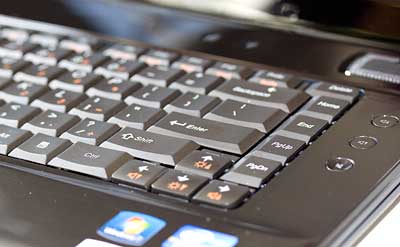 The touchpad has a stippled texture with a glossy feel and we found it a bit fast but manageable. It’s roomy and supports both multi-touch gestures and side-scrolling. The mouse buttons are mushy and feel like worn piano keys. Two 2 watt JBL speakers live above the keyboard under chrome and black mesh grilles. These put out plenty of volume and fairly high quality sound: both gaming sound effects and movie sound tracks sound excellent. Likewise, audio output via HDMI sounded quite good when hooked up to our AV system. 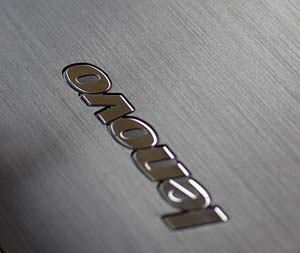 | |
The IdeaPad Y560p has the usual set of ports: 3 USB 2.0 ports (one combined with e-SATA), HDMI, VGA, gigabit Ethernet, ExpressCard/34 slot, SD/MMC/Memory Stick slot, stereo out and mic in. There’s a slider switch on the front right edge for wireless control (Bluetooth and WiFi, there’s no 3G option) but no switchable graphics control. Nor is there software control that might allow you to switch to Intel’s newer, faster, better integrated graphics. That’s a real shame since Intel’s new graphics controller in Sandy Bridge offers up to 30% better performance from last gen Intel HD graphics, and it would use less power than the dedicated Radeon graphics included on the Y560p. Will we see a software update that adds switchable graphics? No word yet. 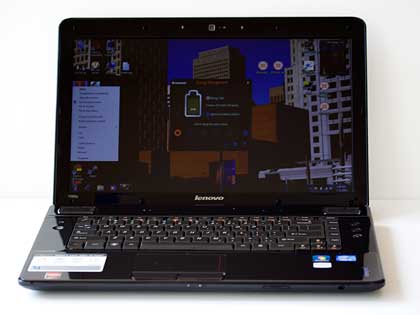 Despite the very fast 2GHz Core i7 CPU and Radeon graphics, the Lenovo runs just warm to the touch. Underside temps and fan exhaust temps are 86F during normal productivity use and keyboard temps are a cool 78F. When gaming, the fan kicks in strongly and bottom temps rise to 95F. Core temps average 45C under normal use and 59C when gaming and the GPU hits 56C when gaming. The GPU has a dedicated fan that ran at 30% when gaming. During normal use the fan runs quietly (you’ll barely notice it) except when it kicks up for 20 seconds every few minutes. There are 3 doors on the bottom of the computer secured with Philips head screws, making it easy to access the RAM slots, hard drive and two Mini PCIe slots. Display The Lenovo has a 15.6”, 1366 x 768 LED backlit gloss display. That’s average for 15.6” laptops, though we wish Lenovo offered a higher resolution display option so we could make even better use of the powerful CPU and graphics card when watching HD video and playing games. That said, for the price, the display quality and resolution are average. Display brightness is fine for indoor use and averages 190 nits across the display. Viewing angles aren’t terribly wide but side viewing angles are wide enough for two friendly folks to watch a movie side by side. Colors are strong and contrast is good though it doesn’t exceed the category average. We found the Lenovo easy on the eyes and pleasing for movie watching. | 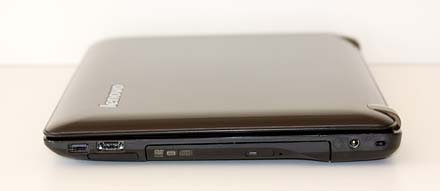 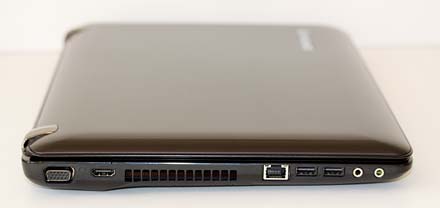 |
Performance
Is Sandy Bridge that much better than the first gen Intel Core i platform? According to our benchmarks, it is indeed faster in terms of CPU performance and better in terms of power management, even if we can’t test Intel’s latest generation HD integrated graphics on the Y560p. The Intel Core i7-2630QM (second gen CPUs add a leading “2” to the CPU model number) is a 4 core/ 8 thread 64 bit processor with Turbo Boost and 6 megs of level 2 cache. It uses 32nm lithography and consumes 45 watts (impressive for a Core i7). It supports virtualization VT-x but not the newer VT-d directed I/O virtualization (if you don’t know what this means, you probably don’t need this feature). The 2GHz CPU can Turbo Boost to 2.9GHz, and it can address up to 8 gigs of DDR3 PC3-8500 1066/1333/MHz RAM.
Retailers currently have 2 versions of the new Sandy Bridge IdeaPad Y560p that vary in RAM and hard drive capacity only. The $999 model has 4 gigs of RAM and a 500 gig, 7200 RPM SATA hard drive while the $1,099 version has a 750 gig, 5400 RPM drive and 6 gigs of RAM. Lenovo offers these configs on their website at higher prices, though they often send out coupons that bring prices down. Lenovo direct also offers a $1,449 model with 8 gigs of RAM, a 750 gig hard drive and a Blu-ray drive. All models ship with 1333MHz RAM, a 1366 x 768 LED backlit gloss display (there are no hi-res or matte options), WiFi 802.11b/g/n (Atheros AR9285), Broadcom gigabit Ethernet, Bluetooth 2.1 + EDR (Broadcom), AMD Radeon HD 6570M graphics with 1 gig VRAM, a 6 cell battery and Windows Home Premium 64 bit.
If you bought a Y series machine 6 months ago or less with the Intel i7-720QM and Radeon HD 5730M, the speed improvements don’t warrant an upgrade. We saw a healthy increase in PCMark Vantage from 5947 on the outgoing system to 7803 on the new system, and 3DMark 06 went from 7291 to 8427. Those numbers put the Lenovo Y560p at the top of the heap among competing brands at the same price. If you’re a hardcore gamer who wants the fastest rig, you clearly will see a significant speed increase from your late 2009 to early 2010 Core i7 laptop with dedicated graphics. The Y560p outperforms our late 2009 Envy 15 with the 1.6GHz Intel Core i7-720QM and Radeon 4830 graphics with 1 gig VRAM: gaming frame rates increased by up to 12fps. It’s hard to beat the Lenovo right now in terms of speed and features vs. price. We’ll have to wait and see what HP, Acer and others offer to counter the Y560p since few Sandy Bridge systems are on the market as of this writing.


 , Posted in
, Posted in



0 Response to "Lenovo IdeaPad Y560p review"
Post a Comment